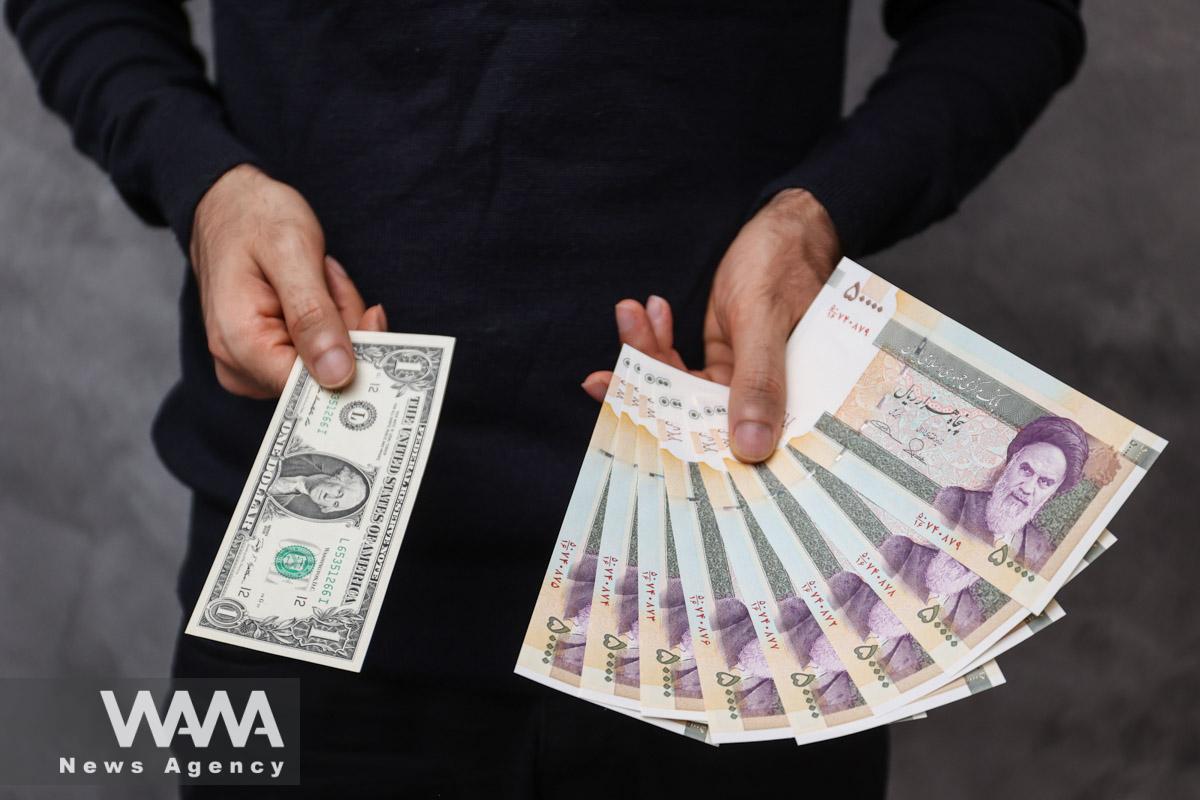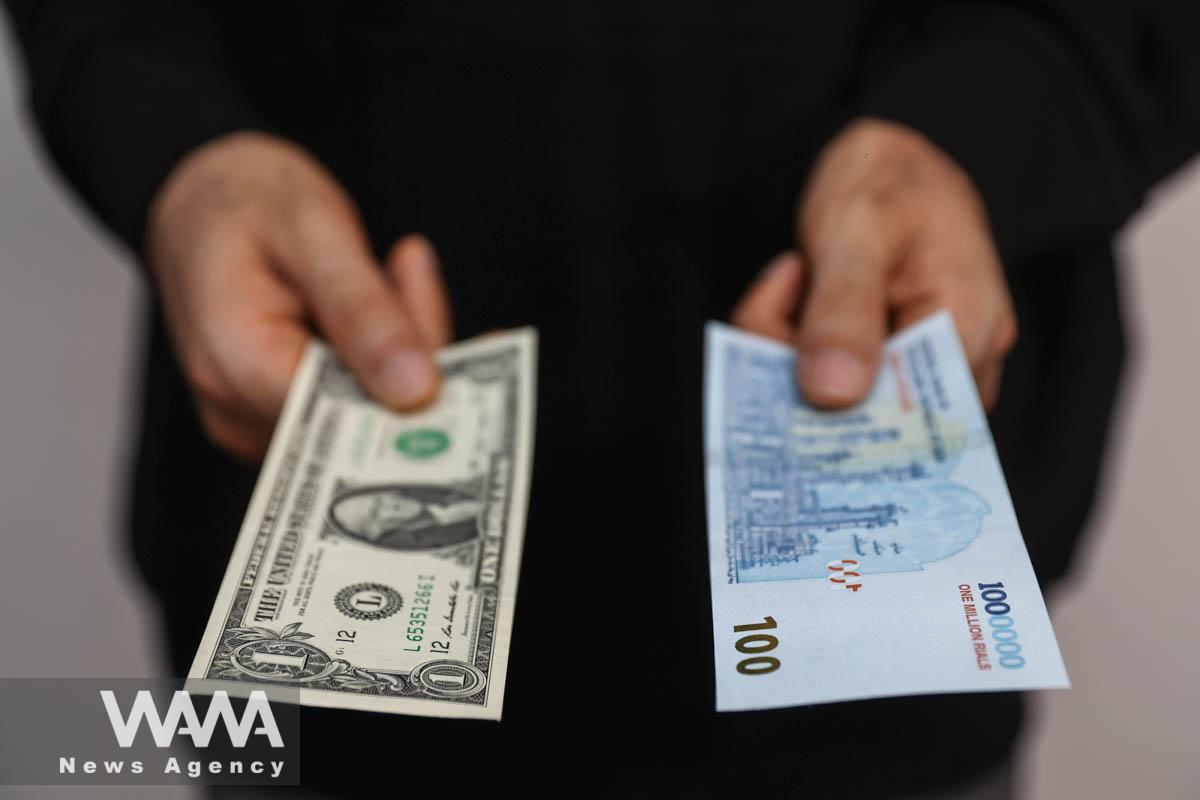Rial on the Edge: Real Change or Rhetoric?
WANA (Apr 14) – As the first round of indirect talks between Iran and the U.S. kicks off in Oman, Iran’s currency market has responded swiftly. The U.S. dollar, which had recently hovered near 106,000 tomans (Iran’s commonly used currency), dropped below 90,000. Tether fell to around 84,000 tomans, and despite a global rise in gold prices, domestic gold and coin values declined. Yet this time, the market’s reaction isn’t the only focal point—public opinion, political figures, and media have also split into two clear camps: one hopeful about a diplomatic breakthrough, the other warning of yet another trap.
Economist Vahid Shaghaghi Shahri believes the political establishment—from senior leadership to the executive level—is prepared to re-engage in serious negotiations. He points out the lack of coordinated opposition from influential institutions as a strong market signal, suggesting optimism about the outcomes.
“The Oman talks, and even messages from figures like Trump, have created a psychological boost in the market—reflected in falling exchange and gold prices,” he says.
According to this view, even a temporary agreement could drive the dollar down to 70,000–75,000 tomans. In a more optimistic long-term scenario—if sanctions are lifted—some economists predict the exchange rate could stabilize around 30,000 tomans. Majid-Reza Hariri, head of the Iran-China Chamber of Commerce, backs this, arguing:
“Over the past six years, political developments—not economic fundamentals—have been the main driver of currency fluctuations.”

Is Iran’s Rial in Free Fall?
WANA (Mar 25) – In March 2024, at the start of the Iranian year 1403, the U.S. dollar was trading in the 60,000-toman range. However, it quickly became clear that this rate would not hold. Early Stability: A Temporary Calm Before the Storm In the initial months of 1403 (2024), the Central Bank of […]
But critics see a different story. They argue that such rapid market reactions aren’t based on solid economic grounds, but rather psychological manipulation by the state or affiliated bodies. They ask: if negotiations with the U.S. haven’t solved structural issues in the past, why is hope still pinned so strongly on them?
A currency dealer in Tehran’s Ferdowsi Square, a hub for foreign exchange trading, confirms a clear shift in behavior: “Buyers have disappeared, and nearly everyone is selling. Most fear the dollar will fall further after Saturday’s talks.”
He adds: “People are selling under stress, afraid their savings will lose value if the exchange rate drops more.”
This growing reliance on foreign news has created a kind of unhealthy cycle: in times of optimism, people dump dollars; when talks fail, panic buying returns. The market is reacting to headlines, not realities—a preemptive pricing of outcomes that haven’t happened.
Hardline media go further, calling this a coordinated effort to “condition” the economy. One outlet claims the recent dip in the exchange rate is part of a political script to portray negotiations with the West as effective—talks which, they argue, have yielded nothing but “illusory achievements.”
“This temporary drop is a calculated move to soften public opinion for fresh negotiations. But the JCPOA experience proved that economic conditioning leads only to another price explosion,” the outlet warns.
With the start of negotiations between #Iran and the U.S. in #Oman, the dollar fell in the free market, though the decline was not significant… pic.twitter.com/wmIizAMvnu
— WANA News Agency (@WANAIran) April 12, 2025
Veteran diplomat Abolfazl Zohrevand, a member of Iran’s National Security Commission, echoes this concern:
“The currency market is reacting irrationally and conditionally to negotiation news—evidence of deep internal economic weaknesses. Such volatility poses risks to national security.”
He warns that these visible reactions serve as leverage for the U.S., which sees how easily Iran’s market moves on a single headline—turning this vulnerability into a bargaining chip.
Even if a deal is reached, Zohrevand argues, without structural reforms, currency stability won’t last. He points to Turkey as a cautionary tale—a country that collapsed its currency not under sanctions, but through flawed economic management.
Some capital market players view the current currency decline as a chance to redirect liquidity toward productive sectors and the stock market. But many warn that unless the government and economic institutions act in a unified and structural way, this momentary calm will be short-lived.

A currency dealer holds a U.S one-dollar bill and Iranian rial as the value of the Iranian Rial drops, in Tehran, Iran, March 26, 2025. Majid Asgaripour/WANA (West Asia News Agency)
Looking at all the perspectives, three scenarios emerge:
1. Temporary or Managed Agreement:
In this case, the dollar could dip to 70,000 tomans or lower. While a short-term calm may follow, deep-rooted risks remain. The 2013 Geneva deal is a prime example: it brought brief stability, but was soon undermined by unmet promises.
2. Comprehensive Agreement with Real Sanctions Relief:
This could push the dollar below 60,000 tomans. In the long term—with restored banking ties, foreign investment, and access to frozen assets—even a 30,000-toman rate could be feasible. But such an outcome demands mutual trust and a lasting pact—something hard to guarantee, especially given the volatility of U.S. foreign policy.
3. Breakdown in Talks and a Return to Deadlock:
The worst-case scenario. Here, the dollar may surge past 110,000 tomans. In a market already conditioned by news cycles, shattered hopes could trigger a crisis far worse than the current one.
Today, both society and the market face a deep contradiction: a desperate desire to escape economic pressure, yet a lingering distrust in promises repeatedly broken. The result is an economy no longer anchored in fundamentals—but in tweets, headlines, and the whispers of closed-door diplomacy.

Artificial Currency and Gold Price Fluctuations Amid Iran-U.S. Talks
WANA (Apr 14) – The prices of the dollar, Tether, and gold, which had surged dramatically in recent weeks, have now declined, even though the Iran-U.S. negotiations are still ongoing and their outcome remains uncertain. This has once again turned the “negotiation-livelihood” dichotomy into a tool for pressuring the Iranian negotiating team. In fact, fluctuations […]
Even those who doubt the negotiations’ success still cling to them. Why? Because at the very least, they offer a brief psychological reprieve. But that hope is fragile. The legacy of the JCPOA remains etched in public memory: promises of economic boom, foreign investment, a strong rial—followed by renewed sanctions and a plummeting currency.
Critics compare this market manipulation to holding down a spring. Sooner or later, the pressure either slips—or snaps back violently. If negotiations fail, the market may not just return to its original state—it may collapse even faster.
That’s why many economists argue the real focus should be on building internal resilience—not sending political signals. Strengthening institutions, reducing oil dependency, ensuring stable investment regulations, and fighting corruption are the true foundations of a healthy economy. What the market needs isn’t more headlines or smiles from diplomats—but transparency and long-term certainty.













